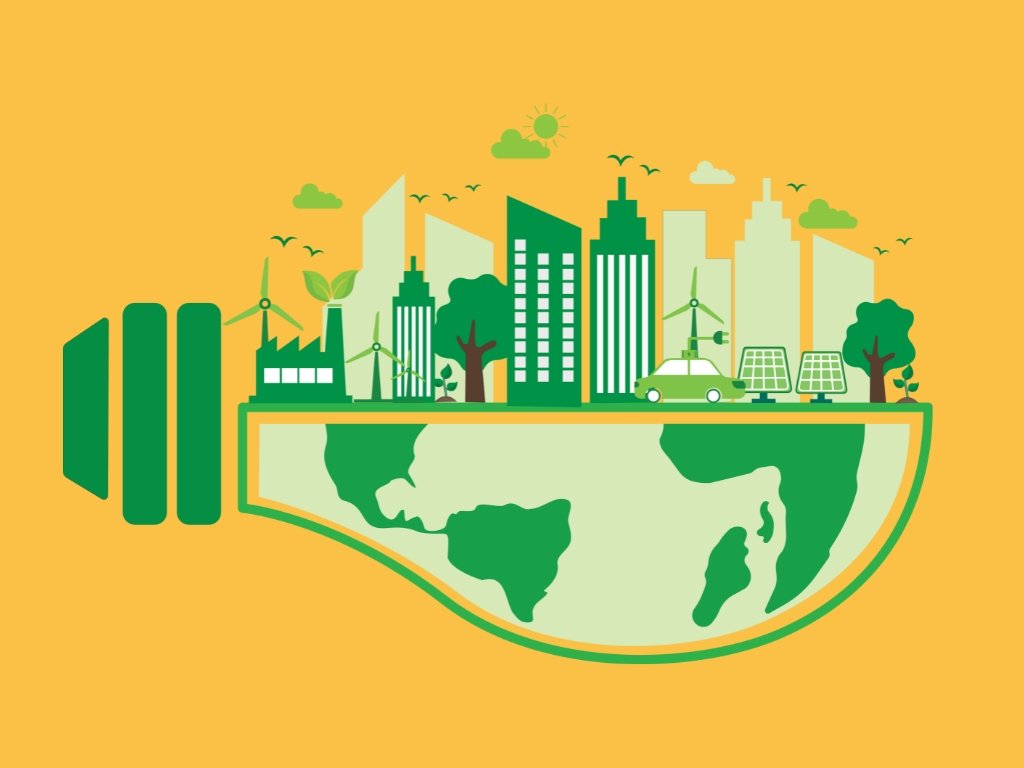From virtual tours and catalogues to biodegradable cleaning supplies — and yes, even ditching the printed tickets.
… Museums have always been great at preserving the past, but what about protecting the future? As the climate crisis becomes harder to ignore (cue: record breaking heat, weirdly intense storms, and yet another reason to not wear polyester), cultural institutions are leaning into their role not just as stewards of history, but as agents of sustainability.
And guess what? They’re doing it in style.
Welcome to the Era of Sustainable Museum Practices
Sustainable museum practices are no longer fringe. From eco-friendly, LEED-certified buildings and to composting programs and digital replacements to old fashioned paper materials, museums are greening their operations in creative, pragmatic, and sometimes delightfully unique ways.
According to a 2024 editorial in Museum International, the word “sustainability” has become something of a shapeshifter. It now spans everything from reducing energy use to championing social equity — and museums are exploring every angle. As the article point out, sustainability is about more than just installing LED lights: “Museums can play a significant role in sustaining local economies, local cultural and natural capital and local communities.”
So how are they doing it? Let’s dive into a few key areas.
1. Eco-Exhibits & Green Storytelling
No shade to the dramatic spotlights and vinyl wall panels, but today’s museum exhibitions are doing more with less. Institutions like the Design Museum in London have led the way — their “Waste Age” exhibition didn’t just explore sustainability as a topic; it embodied it. The exhibit used recycled materials, modular displays, and a low-emissions transport strategy .
⭐Pro tip for museums: Create engagement incentives through easy-to-share digital content related to your exhibitions.
What’s in it for museums besides good karma? Cost savings, lower emissions, and maybe the satisfaction of knowing your exhibition design isn’t leaving a negative impact on the planet.
2. Digital Engagement: Less Paper, More Impact
Paper maps, printed tickets, rack cards, we love you, but it’s time to evolve. Digital engagement has become a sustainability powerhouse in museum operations, cutting down not only on paper but also on the logistical nightmare of printing, shipping, and recycling.
This is where the digital transition comes in. With tools like:
Digital Tickets that make entry paperless and painless
Mobile Engagement that replaces pamphlets with rich digital guides
Digital Membership Cards that ditch the plastic and mailing costs
Museums can now meet visitors where they are (on their phones) and slash their carbon footprint in the process.
👍Bonus: no one ever loses their digital membership card in the laundry.
3. Conservation Gets a Green Makeover (with new tech too)
Here’s something you probably haven’t thought about: cleaning sculptures with biodegradable cleaning agents. Sexy? Not exactly. Important? Absolutely.
A 2021 study published in Heritage explored sustainable conservation methods for contemporary art and design objects using eco-friendly cleaning agents . The results? Promising alternatives to traditional solvents — minus the health risks and environmental damage.
🧪The takeaway: even conservation labs are joining the sustainability party, testing materials and tech tools that help preserve both the art and reduce the institution’s environmental footprint.
4. Green Designs: Museums Built for the Future
Sustainable museum practices start from the ground up — literally. Institutions are rethinking not only what’s inside their walls but how those walls are built and exhibitions implemented. Digital tools allow for simplified eco-friendly implementations.
Exhibit A: Jeongok Prehistory Museum in South Korea, which blends into the hillside, uses natural insulation, holographic projects, and regulates internal temperature with minimal energy use . Meanwhile, green roofs, passive solar design, and rainwater harvesting are becoming standard features in museum renovations worldwide.
For institutions planning a capital project without having to invest so much: don’t just think about building a bigger museum — build a smarter one. Exhibitions can be redesigned with the help of apps, virtual reality and gamification tools.
5. The Museum Gift Shop Glow-Up
Yes, even the museum shop is getting a sustainable revamp. From reusable tote bags made of recycled saris to biodegradable packaging and locally sourced merch, museum retail is shedding its plastic-heavy past.
As Wereldmuseum Amsterdam’s sustainability-focused retail designer Jeanine Aalfspoints out, shops are more than just afterthoughts — they’re educational touchpoints . Each sustainable product tells a story and extends the museum’s mission beyond the exhibit floor.
🛍️Suggestion: skip the glow-in-the-dark keychain. Opt for handmade ceramics by local artists instead.
6. Collaboration Is the New Competition
Sustainability isn't a solo sport. Initiatives like The Climate Toolkit which was developed by Phipps Conservatory & Botanical Gardens, are bringing museums together to share resources, benchmarks, and best practices.
This kind of collaborative energy helps scale impact — because no one should have to reinvent the compost bin. Plus, joining forces shows funders, governments, and communities that museums are serious about climate leadership.
7. Zero-Waste Isn’t Just for Hip Cafés
Composting? Check ✅
Reusable shipping crates? Check ✅
Exhibition recycling plans? Also check ✅
Museums are embracing the zero-waste mindset across operations. Food waste from cafes is being composted, exhibition materials are reused or repurposed, and visitors are being gently (or sometimes aggressively) encouraged to recycle.
It’s not just about eliminating waste — it’s about modeling a more circular, mindful way of thinking for visitors and staff alike.
8. Public Programming with a Green Agenda
Sustainability isn’t just a back-of-house initiative. Museums are also educating the public through climate focused exhibitions, workshops, and even green building tours.
Some museums now offer behind-the-scenes sustainability tours that highlight everything from solar panels to low-flush toilets. Others host community events on recycling, upcycling, and carbon literacy.
When visitors see your green commitment in action, they’re more likely to support your mission — and renew that membership.
Museums as Sustainability Influencers (Yes, Really)
A recent postscript in Museum Internationalreminds us that museums must go beyond “checklist sustainability” and engage with planetary futures in new ways — including embracing Indigenous knowledge systems, post-human perspectives, and local, context-specific solutions .
It’s a tall order. But museums are up to the task — especially when armed with the right tools and partners.
How Cuseum Helps You Go Green
Let’s not pretend digital transformation alone will save the planet. But it’s a huge step in the right direction. Cuseum helps hundreds of museums, zoos, aquariums, parks, gardens, and cultural organizations reduce waste, engage audiences, and operate more sustainably through:
🌿 Digital Membership Cards — no more printing, no more plastic
🌿 Mobile Visitor Guides — less paper, more personalized content🌿 Digital Ticketing — make your entry process as modern as your exhibitions
🌿 Push Notifications — educate visitors with sustainability facts (and gently remind them not to litter) or replace mailed reminders and promos.
Being eco-friendly doesn’t mean sacrificing visitor experience. In fact, it might just enhance it.
Sustainability Is a Journey (With Less Trash)
From carbon audits to compost bins, from solar panels to solvent swaps, museums are redefining what it means to preserve culture. And the best part? Sustainability doesn’t have to be overwhelming.
As Earth Day approaches, there’s no better time to explore small digital changes that make a big impact—like eliminating plastic membership cards, replacing printed mailings with mobile perks, or reducing exhibit waste through smarter engagement tools.
At Cuseum, we’re helping museums go green by going digital.



